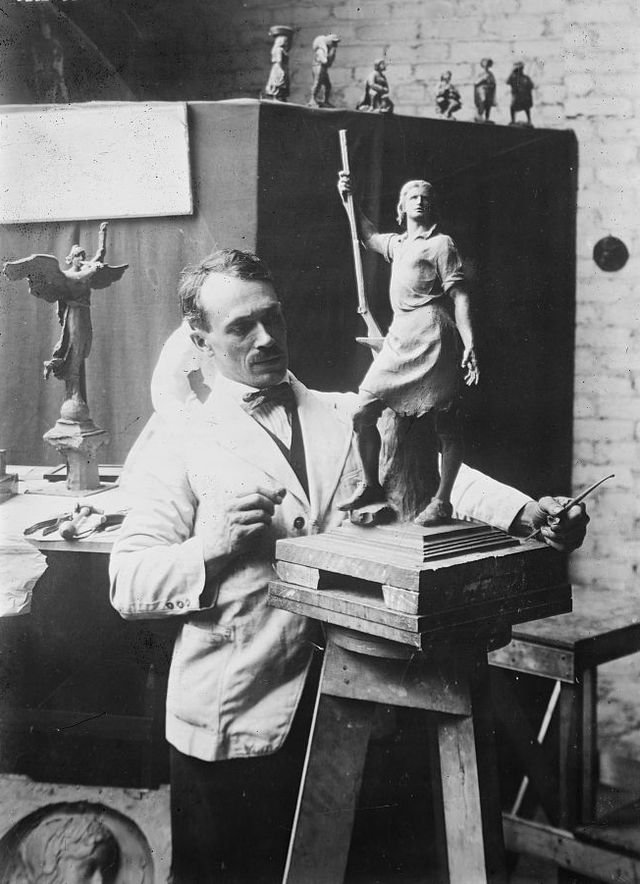Albin Polasek
Albin Polasek. Image courtesy of St. Rose Convent.
In 1901, 22-year-old Albin Polasek followed his brothers and emigrated from Frenstat pod Radhosten, Moravia, Czechoslovakia, to the Midwest. Talented and skilled from a young age, Polasek began his career working for a short time as a woodcarver first in Dubuque, Iowa, before settling in La Crosse, WI.
After moving to La Crosse, Polasek continued to work and hone his skills as a woodcarver for the E. Hackner Company. In doing so, Polasek continued working on his craft, specializing in and creating altars and religious objects. His work, the statue of St. Michael stands outside of the Mary Angelorum of the Angels Chapel at the St. Rose Convent today.
After his time with the company, Polasek went on to continue his education in various regions of the world. For instance, Polasek relocated to Pennsylvania in 1904 to complete formal training at the Pennsylvania Academy of Fine Arts. It was in Pennsylvania where he created one of his most infamous pieces of his journey to establish himself entitled Man Carving His Own Destiny. Following this, in 1910 Polasek won the Prix de Rome competition for his work, Faith, Hope and Charity, granting him three years of study in Rome, Italy. While completing his fellowship in Rome, Polasek created The Sower, a bronze statue that won him an honorable mention in the Paris Salon in 1913.
After returning to America, Polasek was recruited to the Chicago Institute of Art where he filled the role as Head of the Sculpture Department. Polasek remained Head of the Sculpture Department for nearly 30 years, winning various awards for his work and recognition. Due to the numerous sculptures and work he did around the city while Head of the Sculpture Department, Polasek became known as “the Chicago Artist.”
Polasek moved to Florida following his retirement from the Chicago Institute of Art in 1943. Shortly after his move to Florida, Polasek suffered a stroke, leaving him confined to his wheelchair for the remainder of his life. However, Polasek adapted to his newfound circumstances, relearning his craft and further pursuing his passions.
In the early 1960s, Polasek and his wife, Emily Muska Kubat, established the Albin Polasek Foundation and the Albin Polasek Museum and Sculpture Gardens in Winter Park, Florida. The Museum and Sculpture Gardens are still in operation today and remain a popular tourist attraction.
Polasek passed away in 1965 at age 86. Today he is remembered and known around the globe for his immaculate creations.



